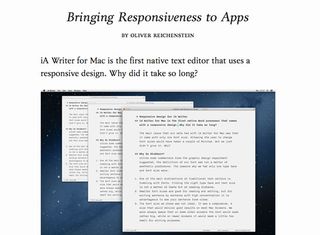OPINION: How to stop your client ruining your design!
Unreasonable client demands needn't ruin the integrity of your work, says web designer Paul Randall. Follow his advice on how to ensure a meeting of minds...

So you've sent the email or given the presentation. You wait for feedback and hear the dreaded word: 'changes'. Talk to any designer and same sinking feeling occurs. What are they going to ruin?
Client feedback is always going to happen, and they may suggest specific design changes; but here's the secret - DON'T TAKE THESE LITERALLY.
It might sound counterintuitive, but the worst thing that you could possibly do at this stage is arbitrarily make the changes they ask for. Simply fulfilling this request isn't what the client is paying you for.
Break down the brief
Try to set a brief for the site. This can be broken down page by page, such as: 'highlight our five-year guarantee to new users'. This allows you to refer to the brief and demonstrate how the design meets the brief. More appropriate client feedback would be 'can we give more importance to the guarantee. It needs to be more important', not 'can we make this bigger and bolder... and perhaps red?'.
This request can be interpreted in a design matter, and don't feel pressured to do it on the spot. Let this request mull over. You can present the changes (and the working out you did to get to the conclusion) in the next session. Always revert back to the brief. Has the design brief met the business request?
Subconscious decisions
Showing them your working out is the key. It sets you (the designer) apart from the client. Believe it or not, we make a lot of subconscious decisions when designing. There's a good reason for this. It gives you the opportunity to demonstrate how you solved the problem. You would be marked on the working out, and not just the final answer.
It's the same with design work, if you can't describe how (and more importantly why) things are done a particular way, then the client should (quite rightly) think of it as just a guess.
Being able to successfully interpret client requests and communicate them into design decisions is probably the most important skill to learn in client services. Without this, you risk a client reject or dismiss good ideas, simply because they can't see how you worked out the answer.
Communicate your craft

We need to communicate our craft more. We are graphic communicators. Save the design with no explanation to the artists. In a recent blog post, Information Architects reasoned why they didn't simply add a text size property in their iAWriter app.
Their reason was they wanted to get to the root issue, and not just implement the design solution the client (users) suggested. Their response back? The first responsive app to hit the App Store. This hit the 'business brief' with their design solution, and made a better project because of it.
Words: Paul Randall
Paul Randall is a web designer from the South-West of England who's been creating websites full time since 2006. Follow him on Twitter.
Liked this? Then read these!
- 2013's essential design events
- Free creative business card templates for designers
- The Golden Ratio: a designer's guide
Would you like to contribute a guest opinion post to Creative Bloq? Get in touch via contact@creativebloq.com!

Thank you for reading 5 articles this month* Join now for unlimited access
Enjoy your first month for just £1 / $1 / €1
*Read 5 free articles per month without a subscription

Join now for unlimited access
Try first month for just £1 / $1 / €1
Get the Creative Bloq Newsletter
Daily design news, reviews, how-tos and more, as picked by the editors.
The Creative Bloq team is made up of a group of design fans, and has changed and evolved since Creative Bloq began back in 2012. The current website team consists of eight full-time members of staff: Editor Georgia Coggan, Deputy Editor Rosie Hilder, Ecommerce Editor Beren Neale, Senior News Editor Daniel Piper, Editor, Digital Art and 3D Ian Dean, Tech Reviews Editor Erlingur Einarsson, Ecommerce Writer Beth Nicholls and Staff Writer Natalie Fear, as well as a roster of freelancers from around the world. The ImagineFX magazine team also pitch in, ensuring that content from leading digital art publication ImagineFX is represented on Creative Bloq.
